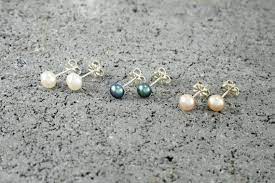
Earrings date back to ancient civilizations, where they pearl earrings were often symbols of status and wealth. In ancient Egypt, both men and women adorned their ears with gold and gemstones. The tombs of Egyptian pharaohs reveal intricate designs that indicate the importance of earrings in their culture. Similarly, in Mesopotamia, earrings were worn by both genders, often designed with conical and hoop shapes.
In ancient Rome and Greece, earrings took on a more decorative role. Roman women, in particular, favored pearl earrings, which were considered the height of luxury. Greek artisans were renowned for their ability to craft delicate and intricate designs, reflecting the wearer’s social standing and taste.
During the Middle Ages in Europe, earrings fell out of favor due to the elaborate hairstyles and headpieces that covered the ears. However, the Renaissance brought a revival of interest in earrings as fashion became more extravagant and ornate. The Baroque and Rococo periods saw the emergence of earrings as essential elements of a sophisticated ensemble, often adorned with diamonds, pearls, and precious metals.
Cultural Significance
Earrings have held various meanings across different cultures. In India, earrings are deeply symbolic and often associated with marriage and spirituality. The tradition of wearing heavy, ornate earrings during weddings is still prevalent today, with designs varying significantly across regions.